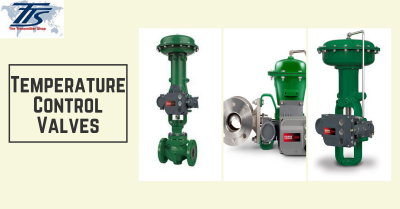Crucial Elements to Think About When Choosing Control Valves
Crucial Elements to Think About When Choosing Control Valves
Blog Article

Maximize Energy Financial Savings and Comfort With Advanced Building Automation Controls
In the realm of contemporary style and center management, the assimilation of innovative building automation manages stands as a crucial innovation. By using the power of automation, structures can adapt, respond, and progress in means that were once unthinkable.
Energy Effectiveness Perks
Power effectiveness benefits can substantially minimize energy usage and functional prices in structures. Energy-efficient systems, such as advanced building automation controls, can maximize the use of sources like illumination, heating, and cooling, leading to lower power expenditures over time.
Moreover, enhanced power efficiency can lengthen the life expectancy of building tools and systems. By operating a lot more effectively, a/c systems, light, and various other building parts experience much less deterioration, causing decreased upkeep and substitute costs. Additionally, energy-efficient buildings frequently regulate greater home values and rental rates, giving long-term monetary advantages to proprietors.
Additionally, power performance can boost owner convenience and efficiency. Properly controlled indoor settings with optimal lights and thermal problems create an even more pleasant and favorable office, causing improved employee fulfillment and performance. Generally, the power performance advantages connected with advanced building automation controls are multifaceted, incorporating expense financial savings, ecological stewardship, and resident health.
Enhanced Comfort Control
Enhancing convenience control in structure environments needs a sophisticated integration of advanced automation systems for ideal resident health. By utilizing sophisticated building automation controls, centers can customize the interior atmosphere to meet the certain requirements and preferences of passengers. These systems make it possible for accurate policy of air flow, lighting, and temperature level, producing a effective and comfortable environment. Occupant fulfillment and productivity are carefully connected to thermal comfort, making it essential to have systems in position that can adjust to altering problems in real-time.
By incorporating these advanced controls, buildings can not only enhance comfort however additionally boost power efficiency by optimizing system procedures based on real occupancy and use patterns. Eventually, prioritizing owner convenience via sophisticated automation systems leads to a much more enjoyable and much healthier interior setting.
Operational Effectiveness Improvements

In addition, the application of real-time surveillance and analytics tools makes it possible for building drivers to identify power inefficiencies and functional anomalies without delay. By continuously checking power use patterns and system performance metrics, a knockout post changes can be made in real-time to enhance power intake and make sure peak operational effectiveness. control valves. Additionally, incorporating need feedback approaches into building automation controls can better enhance functional performance by dynamically adjusting energy use based on grid conditions and pricing signals
Indoor Climate Optimization
Effective interior climate optimization is a fundamental facet of building automation controls, making sure residents' convenience and wellness while making the most of energy financial savings. By making use of advanced sensing units and controls, building automation systems can continually keep track of and readjust temperature level, moisture degrees, air high quality, and air flow to create an optimum interior atmosphere. Preserving constant and comfortable conditions not only improves resident contentment however likewise boosts efficiency and general well-being.
Indoor climate optimization also plays an important role in energy performance. By fine-tuning ventilation, cooling, and heating systems based on real-time information and occupancy patterns, developing automation controls can substantially lower power consumption - control valves. For example, implementing techniques such as demand-controlled ventilation and thermal zoning can help lessen power waste while making sure that each area of the structure gets the essential conditioning.

Sustainable Setting Development
Building automation manages not just optimize interior environment problems for energy efficiency and owner convenience but likewise lay the structure for creating a sustainable environment with tactical management of sources and systems. By integrating advanced building automation technologies, such as sensors, actuators, and intelligent software application, centers can change and check energy use in real-time to lessen waste and lower their carbon impact. These systems make it possible for predictive control valves upkeep, recognizing prospective problems before they intensify and optimizing devices performance to boost long life and efficiency.
Moreover, lasting setting production prolongs beyond energy management to incorporate water preservation, waste reduction, and indoor air top quality enhancement. Building automation controls can control water use, detect leaks, and guarantee correct waste disposal techniques, adding to overall sustainability efforts. Additionally, by managing and keeping track of air flow and filtering systems, these modern technologies boost owner health and wellness and productivity while reducing power consumption related to a/c operations.
Conclusion
In conclusion, advanced structure automation manages deal substantial advantages in regards to energy savings, convenience control, functional effectiveness, indoor environment optimization, and creating a sustainable setting. By implementing these controls, buildings can achieve ideal efficiency while decreasing power consumption and improving resident convenience. It is evident that using innovative automation technology is critical in enhancing building performance and producing a more sustainable future.
Energy efficiency benefits can substantially minimize energy intake and operational prices in structures. Generally, the power effectiveness advantages associated with advanced building automation controls are multifaceted, incorporating expense financial savings, ecological stewardship, and passenger well-being.
Furthermore, incorporating demand reaction strategies right into building automation controls can additionally improve operational efficiency by dynamically changing energy usage based on grid problems and rates signals.
Structure automation manages not just maximize indoor climate conditions for energy performance and resident comfort yet additionally lay the foundation for creating a lasting environment with calculated administration of sources and systems.In conclusion, progressed building automation manages offer considerable benefits in terms of power cost savings, convenience control, operational efficiency, indoor climate optimization, and creating a this article lasting setting.
Report this page